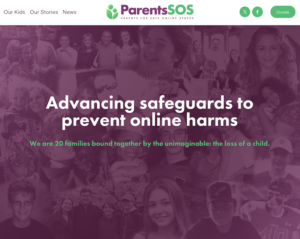Over the past year I’ve assessed ~ 100 elementary and high school students with most frequent reasons for referrals being poor self-regulation, aggression, and inability to pay attention (in that order). While I pride myself on being “fun” and generally well liked by students, I also have been increasingly kicked, pinched, punched, spit on, and sworn at on more than one occasion. It’s not unusual for students to ignore, defy, or refuse requests to work with me, and completion of requested tasks frequently require excessive coaxing, cajoling and even pleading. These aggressive and defiant acts by students are new for me and have been increasing markedly over the past 2-3 years. Concurrent with escalating violence and defiance by students is increasing reports of use of violent media content at a younger and younger age. Many of my grade K, 1 and 2 referred students report use of Mature rated video games including Call of Duty, Black Ops and Fortnite. With teachers reporting increasing incidents of student violence reaching a level where protective gear is now required in many districts, schools might consider educating students and parents regarding reduction and/or elimination of violent media content.
With rise in video gaming, prolific research is documenting concomitant rise in violence and aggression. In 2009 the American Academy of Pediatrics profiled extensive studies showing media violence is causally linked to child aggression, desensitization to violence, nightmares, and fear of being harmed. Early exposure to violent media content has been shown to increase risk of violent behavior. The American Academy of Pediatrics published a policy statement Virtual Violence in July 2016 advising pediatricians, parents, industry and policy makers regarding current video game research and recommendations. Regarding research findings, Virtual Violence policy states: “Summarizing the results of > 400 studies including violent media of all types, researchers found there was a significant association between exposure to media violence and aggressive behavior, aggressive thoughts, angry feelings, and physiologic arousal. Another study performed a similar analysis focusing only on video games. The results, based on 140 such studies, found slightly larger negative effect sizes. Some contend, rightly, that these correlations are in the small to moderate range, but they are stronger than the associations between passive smoking and lung cancer, and many municipalities have banned smoking because of that risk”. APA goes on to recommend that children under the age of 6 years have no exposure to media violence, and first-person shooter games should be restricted from children under the age of 12 years.
I’m not alone in my observations about aggressive and defiant students as evidenced by the number of emails from teachers and principals piling up referencing problematic and violent behaviors in students. Just this week a grade 2-3 teacher in Ontario states “I have become increasingly dismayed the past four years with the prevalence of violent video games in the student population of this age; the students are less and less able to focus, take direction from adults, and get along with each other; needless to say, my job as a teacher is becoming increasingly difficult”. In July 2018 the Canadian Teachers’ Federation (CTF) released a study with teachers from Ontario, Quebec, and B.C. self-reporting about their experiences with violence in the classroom. The study found that between 41 and 90 per cent of surveyed teachers, depending on the jurisdiction, had experienced or witnessed violence directed toward teachers from students or parents. Violence was classified as everything from verbal harassment and swearing, to physical threats and assault. Sherri Brown, director of research and professional learning at the CTF, described the current state as an “escalating crisis.” Verbal threats, physical assault and incidents involving weapons were among the most frequently reported, according to Brown. Fast forward to this year where the number of violent incidents reported by educators with the Ottawa-Carleton District School Board has doubled in the past three years, from 2,713 in 2016-2017 to 5,430 between September 2018 and May 2019. Last school year in the Waterloo Region District School Board there were approximately 1,300 incidents involving elementary student-on-teacher violence, up from around 900 the previous year.
Teachers throughout Canadian schools are now feeling the need to wear Kevlar clothing to protect themselves due to this growing trend of violence in classrooms. “We’re (dealing with) everything to biting to kicking and punching,” said Jeff Pelich, the vice president of the local chapter of the Elementary Teachers’ Federation of Ontario (ETFO). “Between our teachers and educational assistants, and child and youth workers, many of them are now required to wear Kevlar, to wear full vests to protect themselves from punches and kicks.” Kevlar clothing can include, vests, arm or leg sleeves. The Ottawa Catholic School Board (OCSB) said its staff may wear protective equipment as needed, and all staff are required to complete a range of health and safety-related training annually. Sylvain Lamirande, an elementary teacher in the Upper Canada District School Board (UCDSB), said protective gear, including padded jackets and “spit masks,” has become “standard issue” for educational assistants. “I mean, the fact that we’re using Kevlar in the classroom seems to me that something needs to be done.” Educators are reluctant to report incidents of violence by students for “fear of repercussions,” Brown said. Results from ETFO’s members showed only 22 per cent of teachers said they would report cases of verbal or physical violence, and less than a quarter said steps were taken to prevent future incidents. David Mastin, ETFO’s Durham local president, says his region is losing teachers within their first five years on the job.
In spring of 2018 Ontario’s former Liberal government released the Workplace Violence in School Boards: A Guide to the Law to help schools develop workplace violence policies. At the time, the province also pledged to fund an online reporting tool to simplify the process. Some Ontario schools and boards are encouraging educators to take Nonviolent Crisis Intervention training, a de-escalation program, run by the Milwaukee-based Crisis Prevention Institute. The training can range from a one-day classroom seminar to four days to become certified to teach it. Trainees learn how to calm a child in the midst of a crisis by detecting signs of anxiety and anger, and how to respond to a physical altercation, including how to safely hold a child. “I really don’t believe half a day or a day is enough,” said Terri-Lynn Platt, health and safety coordinator with the Elementary Teachers of Toronto. “It can become very violent, very quickly.” The training stresses that physical intervention should only be used if the child is in “imminent danger,” Platt said. Regardless of that caveat, teachers and unions remain leery of the program. Platt argued that whoever takes the training ends up becoming the school’s defacto crisis person. “I will tell teachers it is wise not to have that training.”
The CTF study indicates that causal factors associated with escalating violence by students in Canadian schools are varied but indicate increased class size, insufficient student support, poor problem-solving skills, low socio-economic status, special needs and poor mental health may all be contributing factors. What is not mentioned in any of these articles is rising levels of exposure to physical and sexualized violent media content. While teachers are quick to point out that media content is a parental issue, many schools allow students to bring their own devices and access to violent media content during the school day. A teacher clearly cannot supervise nor restrict student access to violent media content on 25-30 individual devices, especially when many students are refusing to do school work. Violent video games, pornography, social media and cyberbullying are routinely used media content by students in schools who allow personal devices; connecting the dots between violent content and aggressive behavior is unfortunately not readily recognized by educators. Expelling students who exhibit violent and defiant behaviors associated with exposure to violent media content results in short-term gain and long term pain as student will just game unsupervised at home. As schools increase data collection regarding violent incidents by students, logical next steps would be as follows:
- Data Intake: perform Technology Usage Questionnaires with students to help identify and quantify exposure to violent media content, duration, and age of first use and then subsequently uncover possible correlation to violence and aggression episodes.
- Student Education: explain sedentary yet overstimulating effects on body which include high blood pressure when gaming, brain pruning to front lobes and effects of brain pruning on ability to pay attention and learn, progression toward gaming addiction. Enlist school counselling services.
- Classroom Tech Talks: discuss how much and what type of screen use students are doing, discuss importance of sleep, identify alternate activities to gaming, give the Survivor Unplug Challenge e.g. “Your mission, should you choose to accept it, is to go 24 hours without screens”.
- School Screenbuster Program: train grade 6/7 students to do Classroom Tech Talks and weekly 15 min. follow-up sessions (Balanced Technology Management Teacher Training Certification available Sept. 2019).
- Parent Education: train teachers/counsellors to provide initial education session and then monthly parent Tech Talks (Balanced Technology Management Teacher Training Certification available Sept. 2019).
- Parent Meetings: enlist parents to understand their role/job as a parent; try to get family to do a 24 hour unplug; if they can’t, try to arrange family counselling. Student violence is not a student issue, but rather reflective of significant neglect, abuse or trauma issues at home.
Additional Reading:
Ten reasons why video games should be banned from children under the age of 12
This article was written by pediatric occupational therapist, biologist, international speaker, and author Cris Rowan who is passionate about changing the ways in which children use technology. Cris’s website www.zonein.ca, blog www.movingtolearn.ca, and book www.virtualchild.ca can be referenced for additional information. Cris can be reached at info@zonein.ca.





2 Responses
i agree with this article. We just stop the violence
Beside the violent media, educational problems are often about cases of violence involving teachers when punishing students or seniors who want to discipline their juniors. It’s ironic because the aim of school is to construct children’s personalities. However, lots of violence cases happen in the school. Violent conflict in the school causes an imbalance of relations between the perpetrators and victims of the violence. The article below contains a research about student violence in the school and its impacts. I hope it can increase our awareness about this problem.
Causes of student violence at school